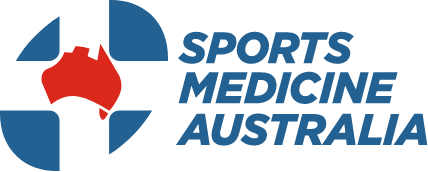
By Michelle Bergeron
On July 26th, Sports Medicine Australia (SMA) hosted a mid-year event in Melbourne exploring drugs in clinical practice.
Senior pharmacist, Lauren Lambert, general practitioner, Dr Michael Ryan and sports physician, Dr Susan White came along and shared their knowledge of over-the-counter medications, prescription drugs and injectables and how they relate to clinical practice.
Lauren Lambert, launched the evening with a discussion on over-the-counter medications. In her session, paracetamol was described as the first line of defence for pain control, being safe, non-addictive and with few side effects. It can also work well in combination with nonsteroidal anti-inflammatory drugs (NSAIDs)
Starting point for NSAIDs should be ibuprofen, for similar reasons: cheap, effective, few side effects, whereas naproxen is more likely to cause gut irritation. Topical NSAIDs can also be useful and have been shown to be more effective than placebo for acute pain, but generally only on a superficial injury.
Lauren also explained the decision to make low-dose codeine a prescription only drug is for the best: being addictive, bearing more side effects and is no better at pain control than regular paracetamol.
The value of supplements like glucosamine, fish oil and turmeric were also discussed. Turmeric seems to be showing promise as an anti-inflammatory with few side effects, but more research is needed.
GP, Dr. Michael Ryan, was the next speaker, covering the broad topic of prescription drugs. He stressed that it is important to ask clients about their recent medication dosage, frequency and duration, as it can affect tissue healing, recovery, heart rate, amongst other things.
When it comes to opiates for pain control, endone is quick release, and can be used in combination with slow release medications (like targin and OxyContin). If patients have not responded to over-the-counter NSAIDs, oral steroids might be worth trying, but only for brief periods and needs to be tapered to avoid adrenal suppression. Importantly, even short-term use of quinolone antibiotics can potentially cause tendinopathy and rupture, even weeks after the drug has been stopped.
The final speaker, Dr. Susan White spoke about injectables. Cortisone, though widely used, has no specific protocol for use, and the local anesthetic injected with it might be chondrotoxic and lead to joint breakdown.
Many other injectables, like platelet rich plasma (PRP), prolotherapy, radio frequency denervation (RFD) and stem cells have little research to prove their effectiveness and can be quite expensive for clients, with costs ranging from $250 – $11,000 out of pocket! Interestingly, for those of us treating athletes who fall under the World Anti-Doping Agency’s (WADA) domain, cortisone and prescription oral steroids lead to positive tests, and require a therapeutic use exemption (TUE) if they are to be used.
Overall, it was a great night with clear, concise information presented by excellent speakers. One last note to remember is that as allied health practitioners, the best advice we can give clients is to speak to their GP or pharmacist about over-the-counter drugs.
To see highlights of this event and other SMA VIC events on Twitter, search our hashtag #VICSMA18.
Follow us on Twitter by searching @SMA_News and @SMA_Events.
Be sure to come along to our Gippsland Symposium -‘The Match Day Experience: Elite Care for the Weekend Warrior’ on Sunday 21st October.
